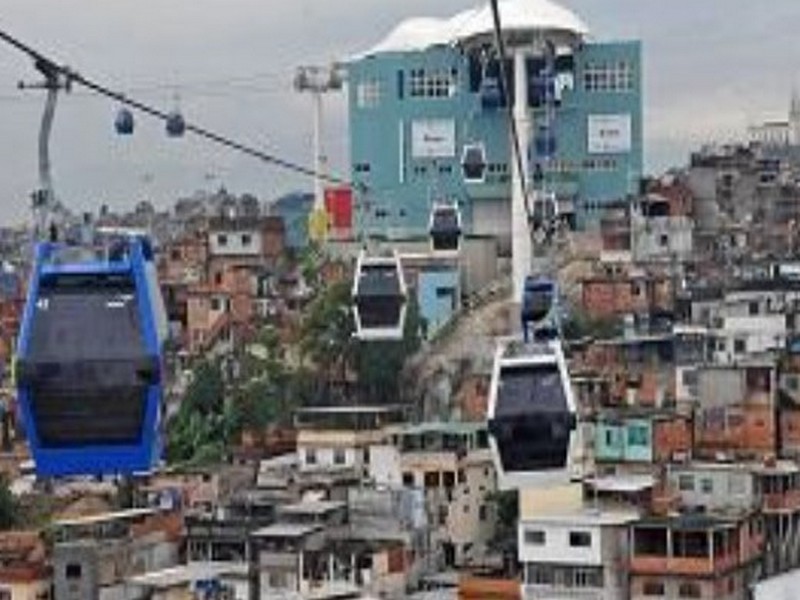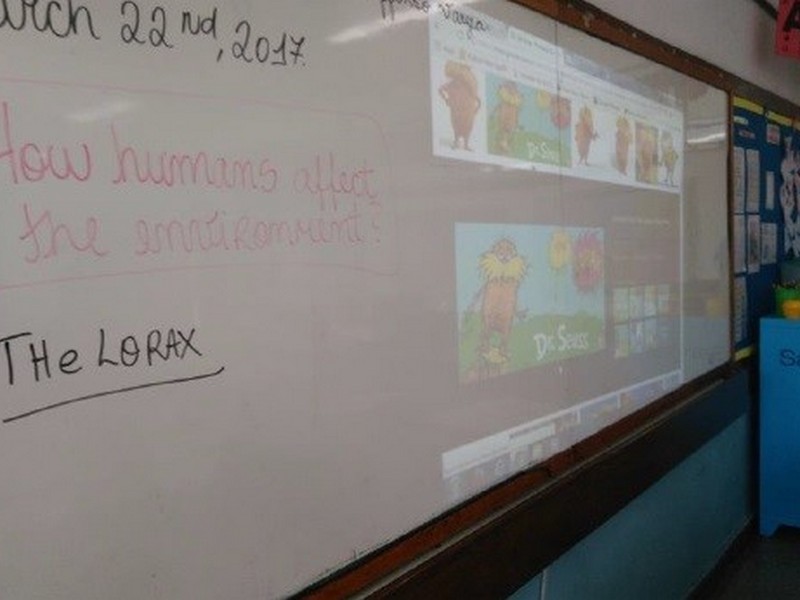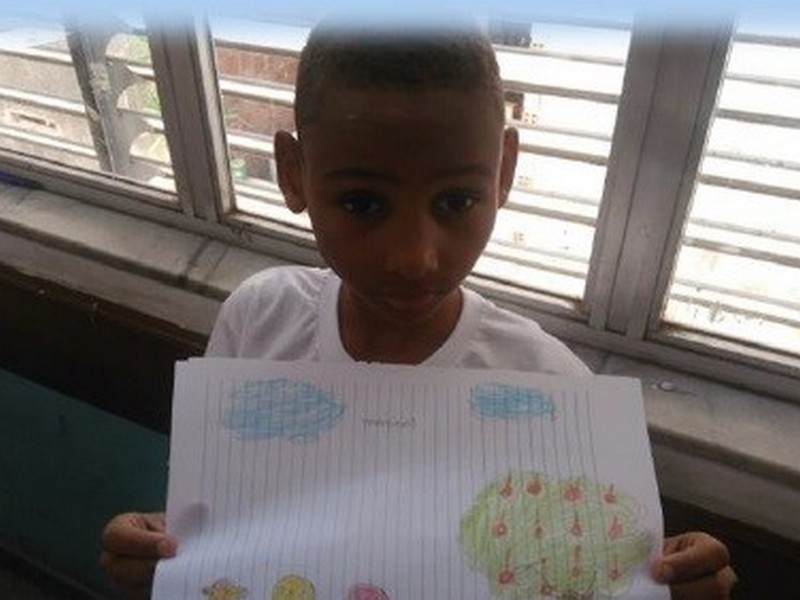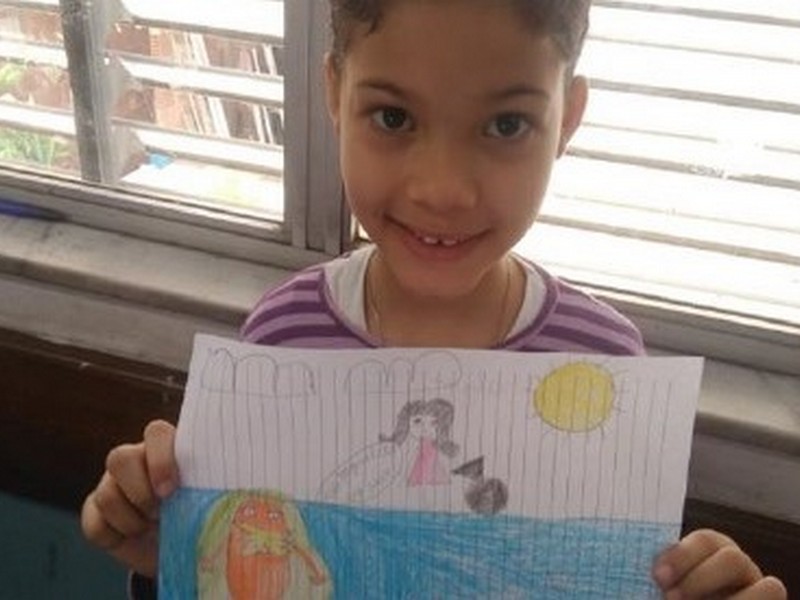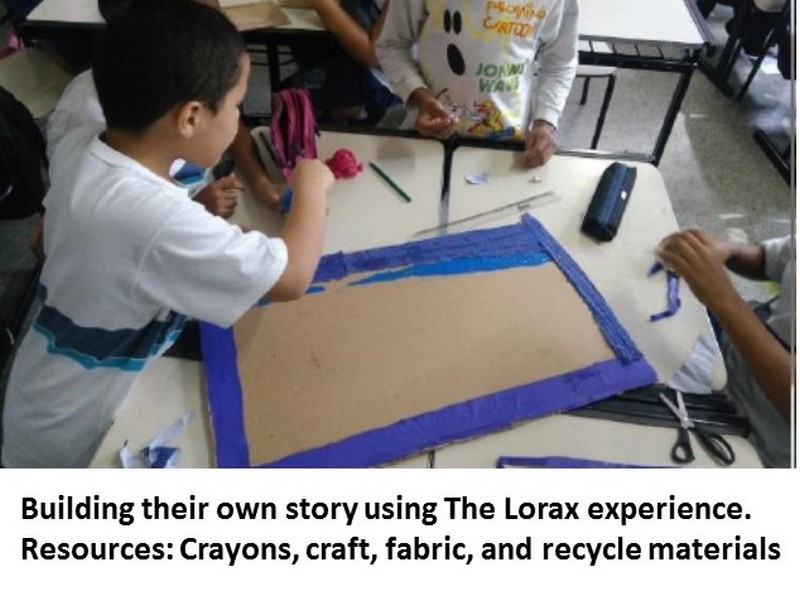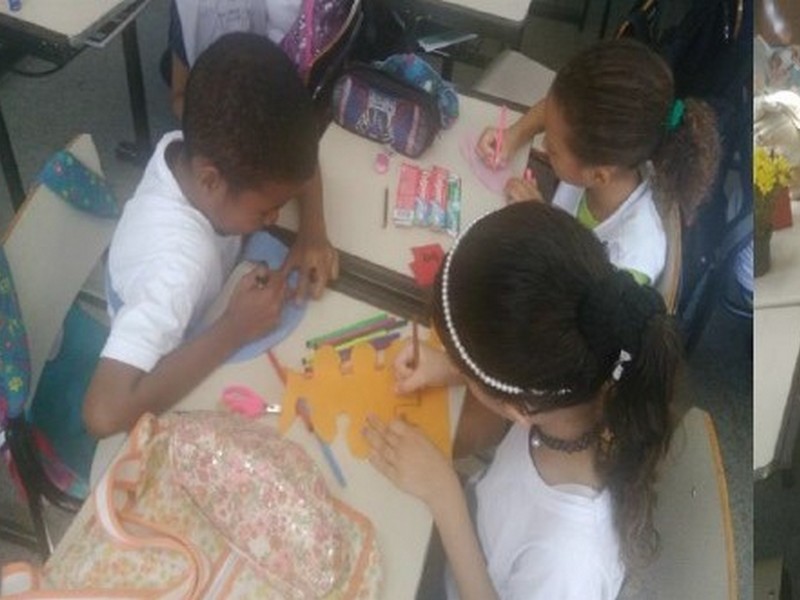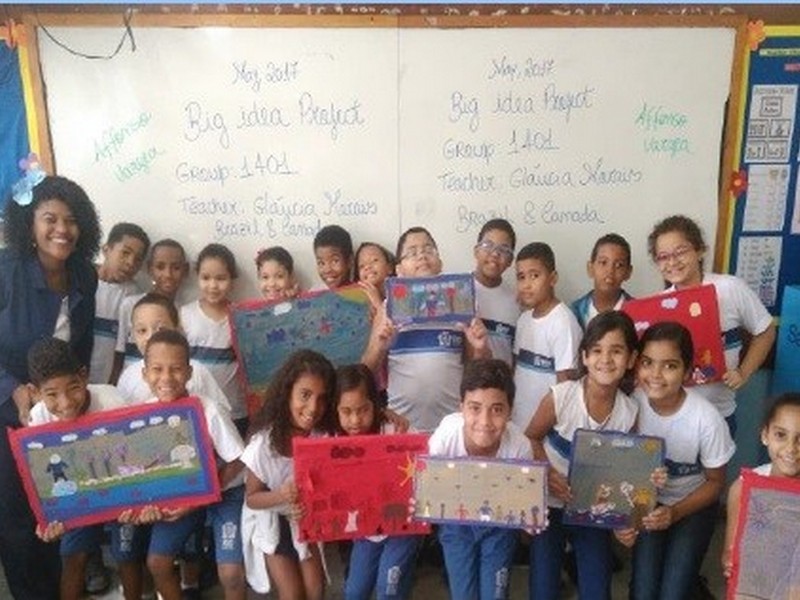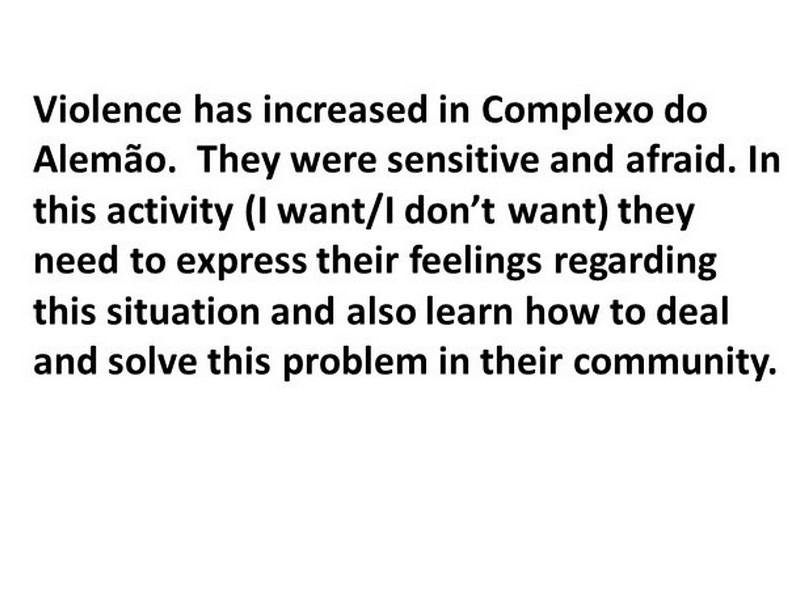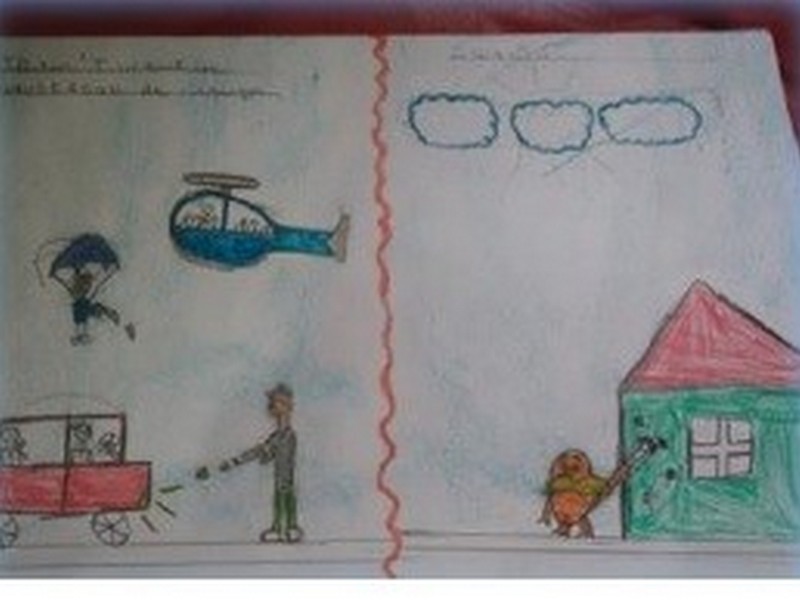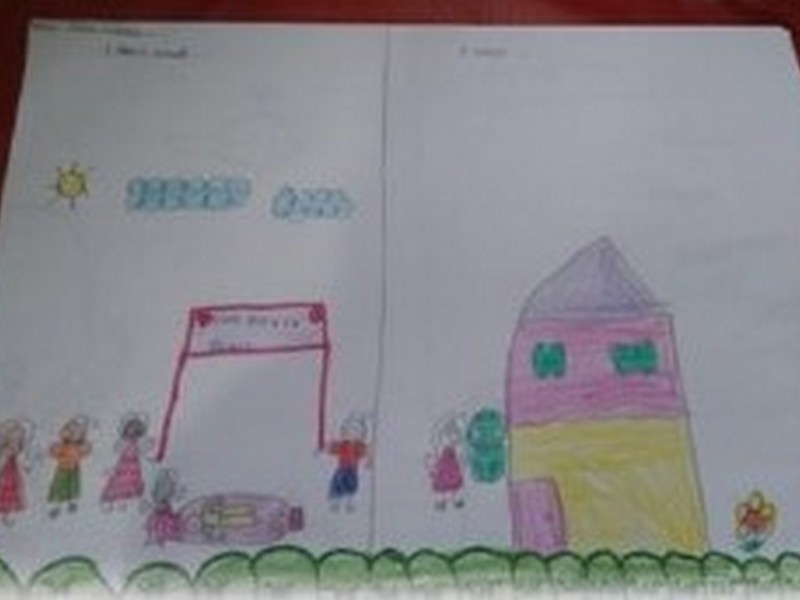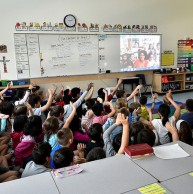Affonso Várzea: How Do Humans Affect The Environment?
Arts Education, Language Arts, Science, Social Studies
School: Affonso Várzea, Rio in Brazil
Teacher: Gláucia Morais, Stevenson Castro
Class: 4th year (9 to 10 years old)
Background
Partnering École Qayqayt Elementary, New Westminster with Affonso Várzea, a Public Bilingual School in a large Rio Favela through Art (Vancouver Biennale) and Brazil in the Schools
The Vancouver Biennale is committed to building a legacy of education, advocacy and social responsibility enabled through art. BIG IDEAS Education Program (BIG IDEAS) was launched in 2010 based on the same educational principles as the British Columbia Ministry of Education’s new curriculum. BIG IDEAS aims to build a creative, collaborative community connecting educators, learners, artists and researchers who in turn shape the program and strive for innovation in education.
Brazil is the guest country of Vancouver Biennale 2014 – 2016 and there are pieces by Brazilian artists that the Biennale launched in Vancouver and New Westminster, such as The Giants, on Granville Island, and the WOW Westminster, in New Westminster. Up to now, BIG IDEAS has been focusing on British Columbia but with BIG IDEAS Anywhere BIG IDEAS can extend globally. Since Brazil is the Biennale’s guest country, the Biennale approached the Consulate to discuss the opportunity to leverage on the education materials developed about the Biennale Brazilian artists and the art installations to connect students in Brazil with Canada. To begin a pilot in Brazil, the Consulate managed to locate Affonso Várzea, a public school in one of the largest favelas in Rio de Janeiro, Complexo do Alemão, which has been developing a project of bilingual education for children from challenging and disadvantaged backgrounds.
2016 PILOT GROUP: Professor Affonso Varzea, one of the first public bilingual schools in Brazil, is located at a low income area in the city of Rio de Janeiro. It is part of a project that started in 2013 named Rio Criança Global Program whose main idea is to provide student with opportunities to really learn English as an Additional Language and also to use it effectively. In 2016 Affonso Varzea has recently started using the BIG IDEAS material with a group of students, quite successfully. The pilot group was 8 to 9 years old and has 26 students, and 2 of them have special needs. They come from the communities of Complexo do Alemão, especially Nova Brasilia, which have a high level of safety risk. The students have been in the bilingual school system since 2013.
Social and Cultural characteristics of the group:
- From low income families;
- From families with low education level;
- The legal guardians are partially present in the school life of the students;
- 03 students have close relatives doing time in jail;
- At least 50% of the group receive social benefits from the Federal or State Government.
Behavioral Characteristics:
- They show aggressive behavior;
- They are extremely communicative;
- They have Learning disabilities (they rely on student monitors to help those who have difficulties);
- They show difficulty in keeping a good interpersonal relationship;
- They show difficulty in dealing with failure in competitions, which generates physical assaults;
- Ease with recreational activities;
- They like to learn English.
Reasons for choosing this group to the pilot BIG IDEAS project: The characteristics that the group features are relevant to make them a study object for the project Big Ideas. In order to make use of the resources to transform the reality of these students, we believe that the entire project can assist these individuals in building positive relations with other individuals from different cultures and backgrounds, and even propagate the bilingual education using effective educational methodologies of learning.
2017 Making Global Connections with New Westminster, BC
After the successful 2016 Brazilian project, the Consulate and Biennale seek to partner Affonso Varzea with a school in Metro Vancouver, specifically in New Westminster to provide the Affonso Varzea students in the bilingual education a special to getting learn about Canada and BC through BIG IDEAS. The proposal includes connecting the Brazilian students with students in New West so that they can talk about what they are learning, what their lives are, and what it is like to be a Brazilian student.
After meeting with Pat Duncan, Superintendent of New Westminster, École Qayqayt, who had participated in Biennale BIG IDEAS in 2016 was suggested as the partnering school. Sonia Maglio, grade 3 teacher, and Amy Bothwell, grade 4/5 teacher, from Qayqayt were most enthusiastic to partake in this shared learning experience with Affonso Varzea in Rio, Brazil. Qayqayt Elementary is also a school with a diverse population of learners from a variety of cultural and socio-economic backgrounds.
École Qayqayt teachers felt that a connection with students in Brazil would be a great platform for sharing and comparing these various curriculum topics in Earth Science. The works of Biennale’s Brazilian artist Vik Muniz was selected as the catalyst for the BIG IDEAS project. This Brazilian artist notably worked with earth materials (rocks, logs and wood chips) when creating Wolf in Squamish, BC, Canada as well as in a Brazilian junkyard.
The BIG IDEAS project took place at École Qayqayt Elementary in New Westminster for students in grades 3, 4, and 5, and involved learning in science, geography, history, and visual arts. The project was entitled “An Intercultural Examination of Environmental Stewardship: Building Enduring Understandings with Brazil and BC’s Human Impact on Physical Geography.” Students explored their own physical environments and local cultures, and then used the same themes to find connections with the landscapes and cultures of Brazil.
Guided by their teachers and artist collaborator Stephen Booth, students focused on the theme of environmental stewardship: what it is, its purpose and importance, and its role in their own lives. Responding to inquiry questions allowed students to define and express their visions of environmental stewardship, and the ways in which humans influence and are influenced by their physical environments.
With the guidance of their artist collaborator and teachers, students used wood- and tree-based materials to create collaborative visual artworks, furthering their experiences as participants in a collaborative project with a common goal and reminding them of the connection between human production and the physical origins of materials.
2017 Affonso Várzea Class
The same group of students from the pilot group was chosen for the 2017 BIG IDEAS project. The class is made up of 24 students with 2 with special needs. These students are in their 4th year and they are 9 to 10 years old. They have 10 times per week and 5 hours with each teacher for English hours.
Social and Cultural characteristics of the group:
- From low income families;
- From families with low education level;
- The legal guardians are partially present in the school life of the students;
- 03 students have close relatives doing time in jail;
- At least 50% of the group receive social benefits from the Federal or State Government.
Behavioral Characteristics:
The behavioral characteristics are the same as previous year except with all changed behavior marked in bold.
- They show good behavior;
- They are extremely communicative;
- They have Learning disabilities (they rely on student monitors to help those who have difficulties);
- They know now how to keep a good interpersonal relationship;
- They show difficulty in dealing with failure in competitions, which generates physical aggression;
- Ease with recreational activities;
- They love to learn English
- They are very curious about Canadian Culture.
Reasons for choosing this group to the pilot BIG IDEAS project: The characteristics of the class are relevant to make it the subject of studies in the big ideas project. The teacher decided to keep this group to improve their abilities and also try to transform their reality making them understand how humans can affect each other and the environment in a positive and negative way. They are able to understand different cultures and social contexts.
Key Learning Resources:
BIG IDEAS Program: Online Learning Resources
Brazil in Schools Learning Resources: As a resource to prepare the students for dialogue exchange with their Brazilian counterparts, the teachers and students from École QayQayt, Canada used the Brazil in School online education materials prepared by the Brazilian Embassy in the UK.
The Lorax – Dr. Seuss
BIG IDEAS Anywhere: Biennale Virtual Art Tour of Wolf by Brazilian artist Vik Muniz and his movie Wasteland (Jardim Gramacho) with his work with garbage collectors in Rio
Learning Process and Timeline
- March, 2017 – Initial Contact with Canadian School – Select an Activity
Plan activities that will address the following area: How humans affect environment? Make resources available including internet access and technological tools; sharing through photos, videos, reports of development of activities. - March to April, 2017 – The Lorax is our helper – Introduce the story and the movie about The Lorax by Dr. Seuss
Present through educational videos and story different context about the Lorax and perform through drawings, painting using recycle materials to show their point of view by building their own stories
Show the importance of showing kindness to others and also respect of the environment - March to April, 2017 – Task 1 Self-Knowledge – Allow students to express their real feeling and about their daily life and environment
Encourage students to indicate situations they LIKE and DISLIKE about environment in their community and how Lorax can help them to solve the problems there. Present their views in a board. Allow them to express their real feelings through art (drawing, videos and painting) - May to June, 2017 – Task 2 Exchange Ideas – Allow students to keep contact with Canadian students
Encourage students to communicate and exchange ideas with École Qayqayt and ask questions about the project, culture and daily life in Canada through teleconference.
Students to watch BIG IDEAS Anywhere: Biennale Virtual Art Tour of Wolf by Brazilian artist Vik Muniz and his movie Wasteland (Jardim Gramacho) with his work with garbage collectors in Rio.
Read the 2016 and 2017 project report prepared by Gláucia Morais here.
Reflection
Teacher – Gláucia Morais
- The students look forward to take part in the BIG IDEAS project again
- The students can see an excellent progress in their lives at school and at home
- A special need student started to improve her mind and abilities to join the group
- BIG IDEAS project help the students to overcome difficulties
- Students learned how they can affect environment
- The students loved The Lorax by Dr. Seuss
- Students were very sensitive. Violence has increased in their community (slum). Those days we couldn’t open our school, as result we had a low attendance and they were afraid of all conflicts
- The students have positive relationship with the others (outcome of their participation in 2016 BIG IDEAS)
- Student gained in self-confidence
École Qayqayt Connecting Canada and Brazil
Teachers and students were excited to make use of strong foundation of exploring environmental stewardship through literacy (Lorax and Kapok Tree), art inquiry and community-based learning (WOW Westminster and Van Dusen Art in the Garden) as well as the project artist collaborator awesome art sessions, to meaningfully engage in lessons utilizing the Brazil in the Classroom materials you gave us.
The students were thrilled to think of a classroom in Brazil doing parallel learning. The class started by accessing their prior knowledge about Brazil. Lots of connections to the Rio Olympics and Soccer were shared! Next students were asked to record their questions about Brazil. The class then used the projector to share some of the information about Brazil focusing on the Land, Environment and Schools. Throughout students were asked to note the similarities and differences between Brazil and Canada.
In the afternoon the teachers paired multi-age partners with chromebooks and asked half the group to research the Amazon Rainforest and half to research the Great Bear Rainforest in BC. Students were to record notes on climate, plants, animals, characteristics and environmental issues. The students then got back together to compare and contrast forests, and placed their findings in a venn diagram. Although many differences were shared, they were able to construct a sentence to show the similarities:
“Both forests are rich in natural resources, provide an important habitat for many animals, feature ecosystems full of plants and trees, are bio-diverse and, lastly, need our protection to ensure their survival.”
The Brazil in School materials were great; the information was thoughtful and students loved the photos.
For more information about the École Qayqayt BIG IDEAS Project: Read here.
Credits
Photos and write up provided by Glaucia Morais
